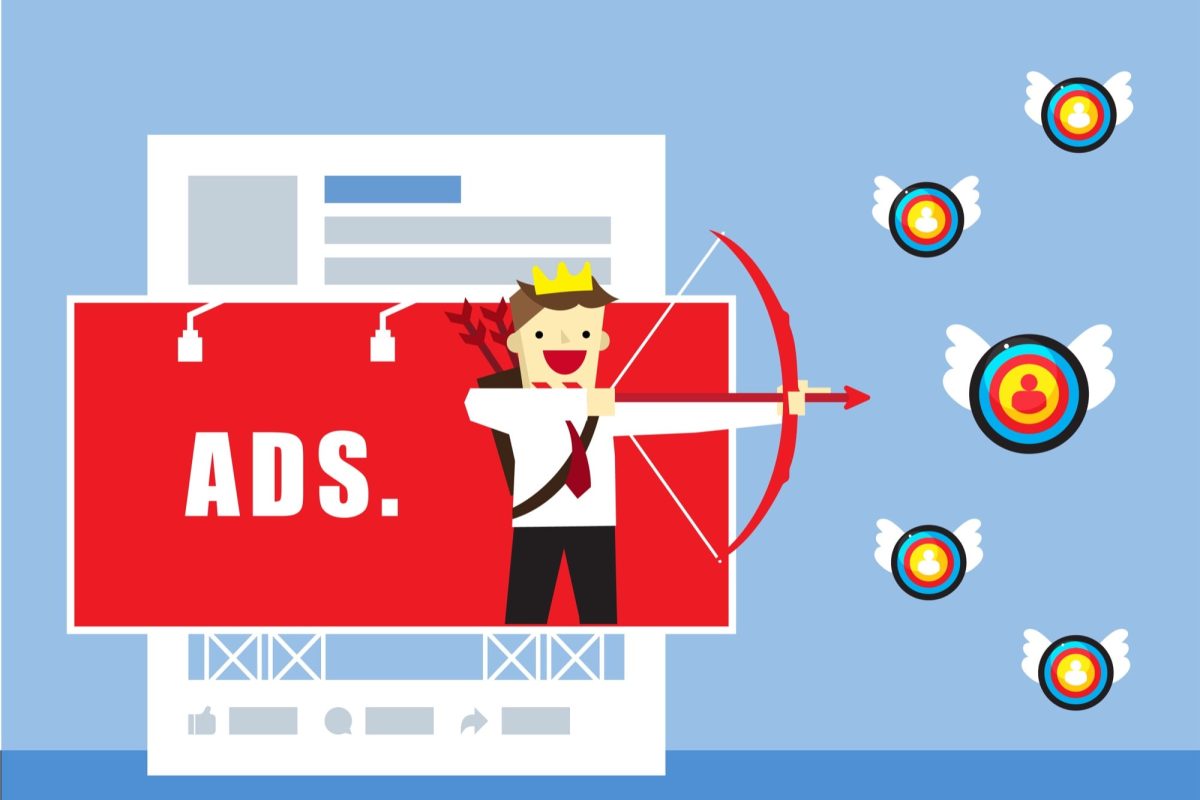Pay-Per-Click (PPC) has become a crucial strategy for businesses looking to boost their online presence and increase sales. Simply put, PPC is an advertising model where advertisers pay a fee each time someone clicks on their ads. Unlike organic methods, this allows marketers to directly purchase website visits.
The main appeal of PPC lies in its ability to quickly generate targeted traffic, which can result in significant sales if done right. Companies worldwide are using PPC to turn clicks into customers.
This article explores the inner workings of Google Ads and Bing Ads, the top platforms for PPC advertising. Both offer unique benefits and powerful features for businesses aiming to improve their sales numbers:
- Google Ads: A powerhouse with a wide network that includes popular sites like YouTube and Gmail.
- Bing Ads: A strong competitor with access to specific audience groups through the Bing search engine and Yahoo network.
Keep reading to discover how you can use these platforms to create effective campaigns that not only grab attention but also lead to meaningful sales growth.
Understanding PPC (Pay-Per-Click) Advertising
PPC advertising, or pay-per-click, is a model of digital advertising where businesses pay a fee each time their ad is clicked. Essentially, it’s a way of buying visits to your site, rather than attempting to earn those visits organically.
How PPC Functions as an Auction-Based Model
Auction Dynamics
Advertisers bid on keywords relevant to their target market. When a user performs a search query that includes these keywords, the PPC auction begins.
Ad Rank
The position of an ad is determined by its Ad Rank, which is calculated based on the bid amount and the quality score of the ad.
Cost
The actual cost per click (CPC) is calculated based on the bid of the nearest competitor and the advertiser’s quality score.
Types of PPC Ads
Businesses can leverage various forms of PPC ads to reach potential customers:
- Text Ads: These are straightforward ad formats that appear as search results on search engine results pages (SERPs).
- Display Ads: Visual banners displayed across Google’s Display Network or other advertising networks.
- Video Ads: These often appear before or during YouTube content.
Channels for PPC Ads
PPC ads appear across multiple channels, providing extensive coverage for campaigns:
- Search Engines: Such as Google and Bing, where ads appear alongside search results.
- Websites: Display ads can be found on websites participating in ad networks.
- Social Media Platforms: Platforms like Facebook and LinkedIn offer their own versions of PPC advertising.
By understanding these fundamental aspects of PPC advertising, businesses can better navigate the auction-based model to place potent ads in front of their target audience. With knowledge about different types of ads and the channels where they can appear, strategies can be tailored to best meet marketing objectives. Moving forward, we delve into how Google Ads dominates this landscape with its robust platform offerings.
The Dominance of Google Ads in the PPC Landscape
Google Ads is a powerful PPC advertising platform that dominates the industry for several reasons:
- Extensive Reach: With its vast network and advanced features, Google Ads can effectively target a wide range of businesses and marketing objectives. It offers:
- Search Network: Displays ads on search results pages based on user queries.
- Display Network: Distributes ads across numerous websites visited by users.
- Video: Allows businesses to advertise on YouTube, one of the most popular video platforms.
- Access to Popular Platforms: As the owner of platforms like YouTube and Gmail, Google Ads provides unique advertising opportunities:
- YouTube Ads: Enables businesses to engage viewers with video ads.
- Gmail Sponsored Promotions: Allows direct promotion within users’ email inboxes.
- Advanced Tools for Keyword Research and Bidding Strategies: Google Ads offers powerful features to help businesses optimize their campaigns:
- Keyword Planner Tool: Assists in finding relevant keywords and estimating bid amounts.
- Auction Insights: Provides information on competitors participating in the same auctions.
- Smart Bidding: Uses machine learning to automatically adjust bids for maximum conversions.
- Enhanced Ad Formats: Google Ads includes various options for improving ad visibility and user engagement:
- Sitelink Extensions: Direct users to specific pages on your website.
- Callout Extensions: Highlight key selling points or offers within your ads.
- Structured Snippets: Display additional information about your products or services.
By leveraging these features, businesses can fully utilize Google Ads to create impactful campaigns that attract attention and drive results. The platform’s focus on relevance and user intent ensures that ads are shown to individuals who are most likely interested in what they offer.
Google Ads also provides comprehensive performance tracking tools, enabling businesses to measure and optimize their campaigns effectively. In the next section, we will explore strategies for maximizing performance within this powerful advertising tool.
Mastering Performance Optimization in Google Ads
In the dynamic world of PPC advertising, Google Ads stands out as a comprehensive PPC marketing system. To fully take advantage of the PPC marketing benefits that Google Ads offers, advertisers must focus on meticulous performance optimization.
Continuous Monitoring and Refinement
Success in Google Ads depends on constantly improving your campaigns. Regular checks and adjustments ensure that your strategies stay relevant to changing market trends and consumer behaviors.
- Make changes in real-time: Act quickly on campaign data to capitalize on what’s working and fix what’s not.
- Test different ads: Compare various ad versions to find out which ones are most effective.
Evaluating Key Performance Metrics
Understanding and analyzing important numbers is crucial for measuring the success of any PPC campaign.
- Click-through rate (CTR): Measures user engagement by showing the percentage of people who clicked on your ad after seeing it.
- Conversion rate: A critical indicator of how well your ads lead to desired customer actions, such as purchases or sign-ups.
Optimization Tips for Google Ads Campaigns
To get the most out of your PPC campaigns and make sure you’re getting a good return on investment (ROI), try these practical tips:
- Refine who sees your ads: Customize your ads to target specific groups of people based on their characteristics, locations, or devices.
- Adjust bids based on performance: Increase bids for keywords that are bringing in good results and decrease them for keywords that aren’t performing well.
- Exclude irrelevant searches: Prevent your ads from showing up for searches that aren’t related to what you’re offering by using negative keywords.
By spending time optimizing these parts of your Google Ads campaigns, you set yourself up for better outcomes, driving sales growth without spending significantly more on advertising.
Exploring Bing Ads as a Viable Alternative
While Google Ads has been the go-to platform for PPC marketing, Bing Ads presents itself as a compelling alternative that marketers should not overlook. Recognizing Bing Ads as a strategic choice in your PPC marketing arsenal can provide additional avenues for reaching target audiences and enhancing campaign performance.
Unlocking Opportunities with Bing Ads for PPC Success
Bing, the search engine powered by Microsoft, has carved out a unique space in the digital advertising realm. Its integration with the Yahoo network extends the reach of Bing Ads, allowing advertisers to tap into a distinct group of users who prefer these platforms over Google.
1. Specific User Segments
By leveraging Bing Ads, businesses can access demographics that may be underrepresented on Google. These include older age groups and those in certain regions where Bing holds more significant market share.
2. Yahoo Network Expansion
The partnership with Yahoo further broadens the potential audience, making it possible for campaigns to be visible across multiple search engines, including those powered by Yahoo.
3. Device Targeting
With options to target users based on their device type and operating system, Bing Ads enables advertisers to refine their audience targeting strategy further.
Optimal Bidding Approaches to Maximize Visibility While Balancing Costs
Strategic bidding is crucial in maximizing ad visibility without inflating costs. Bing Ads provides various bidding strategies tailored to different campaign objectives and budget constraints.
1. Manual CPC (Cost-Per-Click)
This option gives advertisers full control over bid amounts for keywords, allowing them to adjust bids based on performance data.
2. Enhanced CPC
For those looking to maintain some level of manual control while incorporating algorithmic assistance, Enhanced CPC adjusts bids in real-time to improve chances of conversion.
3. Automated Bidding Strategies
These include Target CPA (Cost Per Acquisition) and Maximize Clicks. They rely on Bing’s algorithms to optimize bids at auction time, aiming for either a specific acquisition cost or the maximum number of clicks within budget.
By understanding these mechanisms within Bing Ads, marketers can implement PPC marketing strategies that capitalize on less competitive ad space while still achieving high visibility and engagement.
With thoughtful application of these insights into user segmentation and bidding techniques, advertisers can effectively extend their reach beyond the Google ecosystem through Bing Ads. This allows for diversified traffic sources and potentially higher ROI due to typically lower competition and cost per click on Bing’s network.
Campaign Creation and Optimization Best Practices in Bing Ads
When it comes to PPC marketing strategies, Bing Ads offers a compelling alternative to Google Ads. As Microsoft’s advertising platform, Bing Ads provides unique features that can benefit businesses seeking to reach diverse audience segments with less competition. To make the most of Bing Ads, here are some essential tips for creating and optimizing your campaigns:
High-Performing Ad Groups
- Relevant Keywords: Start by conducting thorough keyword research to discover the terms and phrases your target audience uses when searching for products or services like yours. Incorporate these keywords strategically into your ad groups.
- Compelling Ad Copy: Create ad copy that speaks directly to your audience’s needs and wants. Use persuasive language to highlight the key benefits of your offerings.
Precision Targeting in Bing Ads
- Audience Targeting: Take advantage of Bing’s detailed demographic targeting options to connect with specific age groups, genders, and even device preferences.
- Location Bid Modifiers: Adjust your bidding strategy based on location data to effectively reach potential customers in targeted regions.
By focusing on building ad groups with well-researched keywords and tailored ad copy that addresses the interests and pain points of your target audience, you can create more relevant and engaging campaigns. In addition, leveraging the precise targeting capabilities offered by Bing Ads allows you to deliver your message directly to the right people at an optimized cost. By implementing these strategic elements, you’ll be able to maximize the efficiency of your PPC campaigns on Microsoft’s platform.
Now let’s explore how you can design ads that not only grab attention but also turn potential customers into loyal advocates.
Driving Sales with Effective PPC Strategies
Crafting Compelling Ad Experiences that Convert
The key to successful PPC (Pay-Per-Click) advertising is creating ads that not only grab attention but also motivate users to take action. This requires writing ads with a clear focus on driving conversions. From the moment a user clicks on your PPC ad to the moment they make a purchase, your message needs to resonate with them and persuade them to buy.
1. Crafting an Effective Headline
The headline of your ad is the first thing users see, and it plays a crucial role in determining whether they will continue reading or not. Here are some tips for creating an effective headline:
- Use strong, emotive words or numbers that stand out to grab attention.
- Make sure the headline matches the intent behind the user’s search query.
- Highlight a key benefit that addresses users’ needs or solves their problems.
2. Writing an Engaging Description
The description of your ad allows you to expand on the promise made in your headline. Here’s how you can write compelling descriptions that drive sales:
- Clearly articulate what sets your product or service apart (unique selling points).
- Include a clear call-to-action (CTA) that tells users what to do next – ‘Buy Now’, ‘Sign Up’, ‘Learn More’.
- Use words that evoke urgency, excitement, or curiosity to motivate users to take action.
Example Ad:
Bold Headline: “Save 30% on Premium Running Shoes – Limited Time Offer!”
Description: “Experience unmatched comfort and performance. Order now and hit the ground running with our exclusive discount. Hurry, sale ends soon!”
By incorporating these elements into your PPC ads, you can create an experience that not only grabs attention but also encourages clicks and motivates users to take action.
The Power of Effective PPC Ad Writing
Effective PPC ad writing combines these elements into a seamless message that aligns with users’ search intent and guides them towards making a purchase. It bridges the gap between an interested click and a successful sale through persuasive copy that resonates with the audience’s desires and needs.
Next, we’ll explore how you can optimize your landing pages to maximize conversions once visitors click on your carefully crafted ads.
Enhancing Landing Page Performance for Improved Conversion Rates
The synergy between a PPC ad and the corresponding landing page is fundamental for driving sales growth. When potential customers click on a PPC ad, they are directed to a landing page designed with one goal in mind: conversion. As marketers, we must craft these pages not only to be user-friendly but also persuasive enough to align seamlessly with the ad’s message, thus facilitating a smooth transition from interest to action.
User Experience and Design:
- Simplicity: Maintain a clean and uncluttered layout that focuses users’ attention on the call-to-action (CTA).
- Consistency: Ensure the design matches the visual elements of the PPC ad to provide a cohesive experience.
- Speed: Optimize loading times; a swift landing page keeps the momentum going from the initial click.
Content That Converts:
- Relevance: Tailor content to echo the promises made in the PPC ad, delivering on users’ expectations.
- Clarity: Use clear, jargon-free language that communicates value propositions effectively.
- Trust Signals: Display testimonials, certifications, and guarantees to build credibility.
Optimization Techniques:
- A/B Testing: Regularly test different elements like headlines, CTAs, and images to discover what resonates best with your audience.
- Analytics Tracking: Implement tools to track user behavior and conversions, enabling data-driven improvements.
By integrating conversion-focused ad writing with optimized PPC landing pages, businesses can enhance their conversion rate optimization efforts. This dual approach ensures that every click has the best possible chance of turning into a sale.
Measuring Success: Key Metrics for PPC Performance Evaluation
Determining the effectiveness of PPC campaigns relies on careful measurement of PPC performance. Two important metrics, Click-Through Rate (CTR) and conversion rate, act as benchmarks for success.
1. Click-Through Rate (CTR)
This metric represents the percentage of users who click on an ad compared to the total number who view it. A higher CTR indicates that the ads are resonating well with the target audience and that the ad copy and visuals are compelling enough to prompt user engagement.
2. Conversion Rate
The conversion rate measures how many clicks on an ad result in the desired action, such as a purchase, sign-up, or download. This metric is crucial for understanding how effectively ad clicks lead to valuable customer behavior.
Without these insights, businesses may invest in ineffective strategies. Accurate tracking enables advertisers to refine campaigns, adjust bidding strategies, and enhance targeting methods. This continuous improvement cycle aims to maximize ROI from PPC investments.
By closely examining key performance indicators like CTR and conversion rates, businesses can make decisions based on data that push them towards achieving their sales goals through optimized PPC campaigns.
The Future of PPC Advertising
As technology continues to advance at a rapid pace, the future of PPC advertising holds exciting possibilities. Here are some emerging trends and technologies that are shaping the evolution of PPC advertising strategies:
- Artificial Intelligence (AI) and Machine Learning: AI and machine learning algorithms have the potential to revolutionize PPC advertising. These technologies can analyze vast amounts of data to optimize bidding strategies, target audiences with greater precision, and automate campaign management.
- Voice Search: With the increasing popularity of voice assistants like Siri, Alexa, and Google Assistant, voice search is becoming more prevalent. Marketers need to adapt their PPC campaigns to capture the growing number of voice searches by targeting long-tail keywords and optimizing ad copy for conversational queries.
- Visual Search: Visual search allows users to search using images instead of text. As visual recognition technology improves, marketers can leverage visual search in their PPC campaigns by optimizing image ads and implementing visual search features on their websites.
- Mobile Advertising: Mobile devices continue to dominate the digital landscape, making mobile advertising crucial for PPC success. Adapting ad formats and landing pages for mobile optimization is essential to reach and engage mobile users effectively.
- Personalization: Consumers now expect personalized experiences from brands. By leveraging data and AI technologies, marketers can deliver highly targeted and personalized PPC ads that resonate with individual users, leading to higher click-through rates and conversion rates.
- Integration with Other Channels: The future of PPC advertising lies in integrating it seamlessly with other marketing channels such as social media, email marketing, and content marketing. This integration allows for a cohesive cross-channel strategy that maximizes brand exposure and delivers a consistent message across various touchpoints.
As the digital landscape evolves, businesses must stay informed about these trends and adapt their PPC strategies accordingly to stay ahead of the competition and achieve skyrocketing sales growth.
Conclusion
PPC advertising has the potential to be a game-changer for businesses seeking sales growth. By leveraging platforms like Google Ads and Bing Ads while adopting a data-driven approach, you can unlock new opportunities for revenue generation. Remember to explore other digital advertising channels in conjunction with PPC to create a comprehensive marketing strategy that drives remarkable results.
Here are some final thoughts on utilizing PPC for skyrocketing sales:
- Embrace the Power of PPC: PPC offers businesses the opportunity to reach a vast audience across search engines, websites, and social media platforms. By leveraging Google Ads and Bing Ads, you can tap into their extensive networks and display ads on popular platforms like YouTube and Gmail.
- Adopt a Data-Driven Approach: Take advantage of the robust data provided by PPC platforms to optimize your campaigns. Conduct thorough keyword research, refine your bidding strategies, and make use of ad extensions and formatting options to enhance visibility and engagement.
- Continuously Optimize Performance: Ongoing monitoring and refinement are crucial for driving successful results in PPC advertising. Regularly evaluate key performance metrics such as click-through rate (CTR) and conversion rate. Optimize campaign settings, ad targeting, and budget allocation to maximize your ROI.
- Craft Compelling Ad Experiences: Write persuasive ad headlines and descriptions that entice clicks and drive customer action. Ensure that your landing pages align with your ad messaging, providing a seamless experience for users and increasing conversion rates.
- Track Relevant Metrics: To assess the effectiveness of your PPC campaigns, track key metrics such as CTR, conversion rate, and cost per acquisition. Use this data to make informed decisions and continuously improve your strategies.
Keywords: PPC, sales growth






